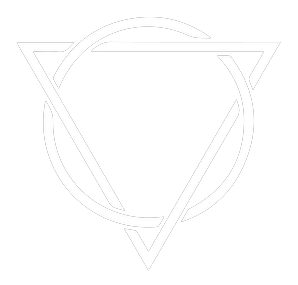Anamorphic Cinematography is absolutely gorgeous. Yet a pain in the ARSE to shoot with.
The anamorphic process is derived by a comparatively widescreen image being horizontally compressed to fit into a storage medium with a narrower aspect ratio. Compatible play-back equipment such as a projector with a modified lens can then recompress the horizontal dimension to show the original widescreen image. This is typically used to allow one to store widescreen images on a medium that was originally intended for a narrower ratio, while using as much of the frame, and therefore recording as much detail as possible. The word “anamorphic” and its derivatives stem from the Greek words meaning formed again.
Anamorphic lens development has been around for nearly 100 years, dating back to the 1920’s and 30’s. With it being more heavily utilized in major motion pictures starting in the 1950’s as a way to get audiences back into theaters after ghastly home television started popping up in white picket fence suburban America to make suburbanites cease critical thinking. Those TV screens were tiny bulging squares with curved edges. Ghastly square aspect Instagram style. In Hollywood, a new term “Cinemascope” was being adapted for widescreen format using anamorphic lenses which had been developed at Fox (the same Fox who’s news channel rots brains like Gollum with the ring) in an attempt to give a larger resolution and more wide frame to get butts back in theater seats. Similar to IMAX or 3-D, these new formats pushed what only large format theater screens could offer best. An immersive cinematic experience.
The anamorphic format has been an option for large budget productions to shoot with ever since. At a cost. Lenses were as expensive as a down payment on a house. They were massive in size and only really worked for big format pictures such as Ben Hur or Blade Runner. The look is distinct, most visually notable by its stretched horizontal flares. With other aspects such being aperture flare, unique blooms and optics, unique vignetting characteristics, spacial compression, and stylized depth of field with squished bokeh circles of confusion. But came with these unique traits not achieved in any other way also came many setbacks. The systems were hard to focus, not very sharp, the close focus distance was farther than a standard “spherical” lens, and the playback and film lab processing was increasingly complicated with additional steps being added in what was already a multiple-step process.
However, in the last 30 years, the only way a more independent filmmaker could access the anamorphic format was with various adapters. Names such as Hypergonar, Sankor, Iscomorphot, etc… each produce their own unique optical characteristics.
Adapters work by being attached to a non-anamorphic lens to be the stretch component of a multiple part system so when combined, they play the same service as a single true anamorphic lens. Many of these adapters had been made in Europe, Russia, and Asia through the 60’s, 70’s, and 80’s and are affordable by being bought used. Scouring through old camera shops or places such as E-Bay yield the best results. As a special niche of cinematography, combined with not being mass produced, they are often times in high demand and thus hard to find.
Having had some past experience with some of these adapters, I have first hand realized how difficult it is to try to understand all these mechanics.
Each of them require very custom components and setups which often times are individually unique. Short of scouring forums, there isn’t a manual you can pic up or a single step by step on how to build one. It must more be figured it out on your own through trial and error.
Within the first couple years shooting anamorphic b-roll with various adapter setups, I often times was met with moderate results. The main struggle I always found was the size of the rig because the larger a system is the less easy it is to carry with you and the less likely you are to use it regularly. Until I finally caved and ended up purchasing one of the first micro 4:3 anamorphic lenses in the world made by SLR Magic out of Hong Kong.
About half a year later, we completed my first project shot entirely in anamorphic. A promotional piece for my street photography portfolio at www.philosophicalphotography.com. It’s a bit of an Exposé on why I often combine philosophy with street photography. Hence how the site gets’s its name. The cinematographer on the project was the amazing Ben Wong.
This promotional piece for philosophicalphotgraphy.com was shot with a Kowa for Bell and Howell 2x Anamorphic adapter.
As a cinematographer, Ben has done a significant amount of research in this area which he has then implemented on. One might call him a bit of a mad scientist when it comes to perfecting a custom anamorphic setup. Exhibit A:
Cost effective anamorphic — True micro 4:3 anamorphic lens from SLR Magic with a DIY anamorphic adapter: Part 1
One might call him a bit of a mad scientist when it comes to perfecting a custom anamorphic setup:
Part 2
The results yielded such a great final outcome it has inspired me to do more projects in this format. Through the akes and pains, it's worth it, in the end, to get the visual style I fancy the most.
Ben’s YouTube channel is jam packed with excellent wide aspect travel ventures in this format and comes highly recommended. Thanks so much to Ben for all his help putting these efforts together and sharing some knowledge for others interested as well.
Here’s a collection of additional anamorphic B-Roll I’ve personally shot in the past and license from FILMSUPPLY. It will always be a growing collection.





